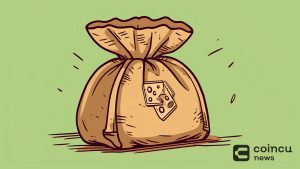Charles Hoskinson: Tether only works on trust, not in line with crypto ideals
In one interview Lately, Input Output CEO Charles Hoskinson has been pretty negative about Tether. He argues that tether is based on trust and not fair systems, which goes against the ideals of cryptocurrencies.
Given the USDT liquidity backing the dramatic swings in the crypto market, is the Tether controversy a ticking time bomb waiting to explode?
There are always controversies about tether
Although Tether is currently banned in New York State, the USDT’s market cap has skyrocketed since the New York Attorney General (NYAG) controversy. As of February 23, it had a market cap of $ 34.7 billion. But in the next four months it grew 80% to reach a valuation of $ 62.7 billion today.
Source: Coinmarketcap
Some argue that while it is trong, tether does not have enough reserves to match the USDT in circulation Bitfinex CTO Paolo Ardoino says USDT is 100% supported and the company is working to improve transparency.
In light of the controversy, Charles Hoskinson asked whether a big name like Tether could / should act in today’s gray area?
“People need to understand that the only reason Tether has any value is because they are a centralized company that claims that every USDT unit issued is somehow tied to a certain amount of money, the equivalent of US $ 1. Dollar”.
Only a small percentage of USDT reserves include cash, said Martin Walker, director of banking and finance at the Center For Evidence-Based Management. Walker claims that Tether operates like a bank but has not been subjected to equivalent testing.
Furthermore, along with previous scandals, Hoskinson was right when he said that Tether is an organization that operates solely on trust:
“When you switch to real asset-backed tokens like Tether, you get into the situation of how to determine these real assets and whether the promises, commitments and agents are really true. The main thing or not?”
Earlier this year, parent company Bitfinex reached a settlement with the New York Attorney General (NYAG) and paid out $ 18.5 million. The settlement allows Bitfinex to evade allegations that it covered a loss of $ 850 million in customer funds from a payment processor. The authorities also stopped further investigations into Tether’s reserves.
Under the terms of the agreement, Bitfinex and Tether did not admit any wrongdoing. However, you are required to continuously submit quarterly reports describing Tether’s reserves over the next two years.
In the event of a tether downturn, many would argue that NYAG was not strong enough to prevent such a scenario.
Veronica
According to Cryptoslate
Follow the Youtube Channel | Subscribe to telegram channel | Follow the Facebook page





















